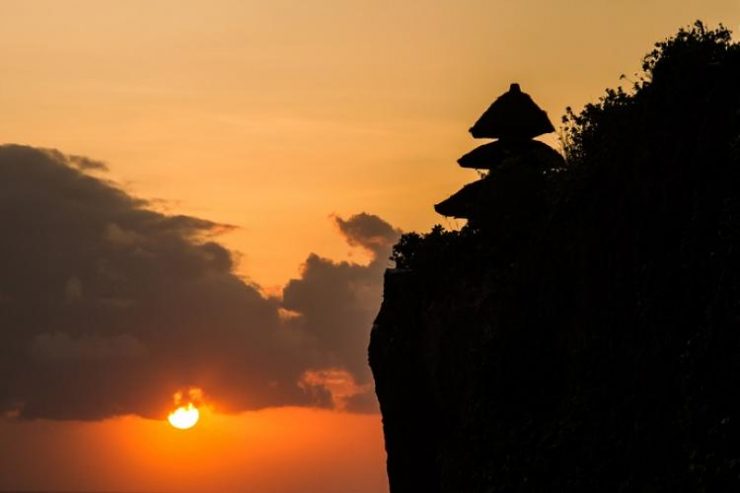IMBUED with a deep-rooted Hindu spirituality, Bali is often described as ‘the island of a thousand temples’, but the island of ten thousand temples would probably be a more accurate description. From windy mountain peaks to rugged cliff tops, serene lakes and vibrant family compounds, a temple is never far from view.
Hinduism came to Indonesia from India in the first century AD and still defines life on Bali. While some religious practices differ from India, Balinese Hindus worship the same gods and goddesses and perform similar rituals at temples across the island.
Bali’s greatest temples are also ancient historical sites and protect the island and its people. Over a thousand years old, the sprawling complex of Pura Besakih clings to the slopes of Mount Agung – Bali’s largest and holiest volcano, believed to be the realm of the gods. Known as the ‘mother temple,’ Besakih is the spiritual and religious center of the island and Brahma, Wisnu and Siwa are all worshipped here.
Another important mountain temple, Pura Lempuyang occupies a lonely mountain ridge in the far north of the island and is the abode of the god Iswara, ‘keeper of the peace.’ Reached by 1700 steps, this mysterious and beautiful temple has stunning views over the valley and is a place of pilgrimage and spiritual awakening, especially during elaborate full moon ceremonies. Meanwhile Pura Batukaru nestles at the base of Mount Batukaru, Bali’s second highest volcano and is surrounded by lush rainforest. Built to honor the spirit of lakes and mountains, this temple is off the beaten track and has a very peaceful, otherworldly setting that makes it highly conducive to meditation.
Boasting scenic and often dramatic locations, Bali’s Pura Segara are sea temples designed to appease the wild gods of the ocean and have particular significance during Melasti, the purification rituals that precede Nyepi, the Balinese New Year. At this time sacred objects are carried in long colorful processions to the sea where people bathe with their deities in a symbolic cleansing of body and soul.
Pura Luhur Uluwatu clings to mighty cliffs on the southern most tip of the island where the world famous surf break of Uluwatu sends waves crashing to the rocky shore. Built in the 11th century, it is dedicated to Rudra, the god of storms and wind. Sunsets here are mesmerizing and provide the perfect opportunity to catch a dramatic kecak performance – Bali’s legendary trance fire dance. Another well-known sunset spot, Pura Tanah Lot perches on a rocky outcrop off the coast of Tabanan and its picture-perfect setting makes it one of Bali’s most visited (and photographed) temples.
Pura Tirta Empul is the most celebrated of Bali’s water temples, with ornate water fountains, sacred springs and bathing pools making it a popular destination for cleansing rituals. Believed to have been created by Indra, the ruler of heaven and god of thunder and rainfall, its holy springs are said to have strong curative properties. Other water temples are built within lakes, such as the stunning Pura Ulun Danu Bratan which appears to float on the water and is dedicated to the worship of Dewi Danu, the goddess of the lake.
InterContinental Bali Resort is proud to share Bali’s fascinating heritage, and guests wishing to visit island temples and discover the local culture can take advantage of our unique brand concept ‘In the Know.’ The Resort’s concierge can offer destination tips, valuable insider information and arrange fascinating day trips that can combine temple visits with a tour of stunning terraced rice fields and other island attractions. [traveltext.id]
















